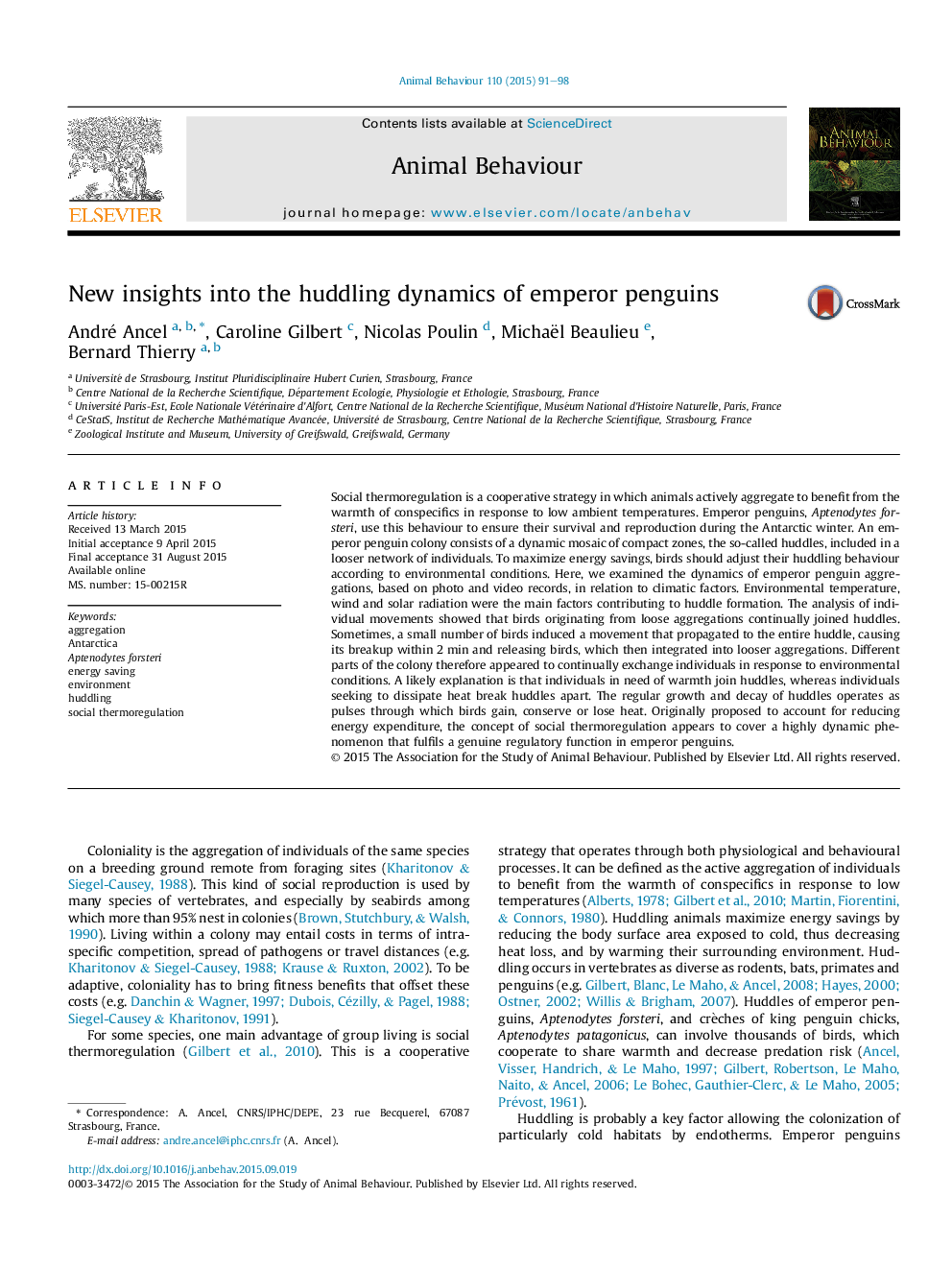| کد مقاله | کد نشریه | سال انتشار | مقاله انگلیسی | نسخه تمام متن |
|---|---|---|---|---|
| 8489510 | 1552218 | 2015 | 8 صفحه PDF | دانلود رایگان |
عنوان انگلیسی مقاله ISI
New insights into the huddling dynamics of emperor penguins
ترجمه فارسی عنوان
بینش های جدید به پویایی شلوغی از پنگوئن های امپراتور
دانلود مقاله + سفارش ترجمه
دانلود مقاله ISI انگلیسی
رایگان برای ایرانیان
کلمات کلیدی
موضوعات مرتبط
علوم زیستی و بیوفناوری
علوم کشاورزی و بیولوژیک
علوم دامی و جانورشناسی
چکیده انگلیسی
Social thermoregulation is a cooperative strategy in which animals actively aggregate to benefit from the warmth of conspecifics in response to low ambient temperatures. Emperor penguins, Aptenodytes forsteri, use this behaviour to ensure their survival and reproduction during the Antarctic winter. An emperor penguin colony consists of a dynamic mosaic of compact zones, the so-called huddles, included in a looser network of individuals. To maximize energy savings, birds should adjust their huddling behaviour according to environmental conditions. Here, we examined the dynamics of emperor penguin aggregations, based on photo and video records, in relation to climatic factors. Environmental temperature, wind and solar radiation were the main factors contributing to huddle formation. The analysis of individual movements showed that birds originating from loose aggregations continually joined huddles. Sometimes, a small number of birds induced a movement that propagated to the entire huddle, causing its breakup within 2Â min and releasing birds, which then integrated into looser aggregations. Different parts of the colony therefore appeared to continually exchange individuals in response to environmental conditions. A likely explanation is that individuals in need of warmth join huddles, whereas individuals seeking to dissipate heat break huddles apart. The regular growth and decay of huddles operates as pulses through which birds gain, conserve or lose heat. Originally proposed to account for reducing energy expenditure, the concept of social thermoregulation appears to cover a highly dynamic phenomenon that fulfils a genuine regulatory function in emperor penguins.
ناشر
Database: Elsevier - ScienceDirect (ساینس دایرکت)
Journal: Animal Behaviour - Volume 110, December 2015, Pages 91-98
Journal: Animal Behaviour - Volume 110, December 2015, Pages 91-98
نویسندگان
André Ancel, Caroline Gilbert, Nicolas Poulin, Michaël Beaulieu, Bernard Thierry,
